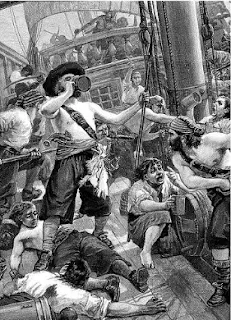So says Louis Woodhill for Forbes,
here:
"The most fundamental issue that determines the workability of a gold standard is whether it attempts to use gold as money. Any gold standard system where the size of the monetary base is determined by the physical supply of gold will eventually suffer a deflationary collapse. The economic catastrophe that occurred in 1930 was inevitable, given the design of the gold standard system in use at the time. ...
"The use of gold as base money would quickly become the biggest single source of demand for gold, just as was the case during the years prior to the Great Depression. Sooner or later, this new demand for gold would cause the real price of gold to start rising. This would automatically cause the real value of the dollar to rise, precipitating a financial and economic crisis.
"Our highly leveraged financial system simply cannot tolerate monetary deflation. During a financial crisis, everyone tries to become more liquid at the same time. That is, everyone tries to increase their holdings of money, because the possession of money itself is the only thing that can guarantee that you will be able to pay your debts.
"If gold is money, and money is gold, this means that, once a liquidity crisis started, the demand for gold would increase. This would drive up gold’s real value even farther, intensifying the crisis. A destructive feedback loop would develop, leading to a complete meltdown of the financial system and the real economy. This is exactly what happened in 1930."
It should be added that a monetarist system, by way of contrast, cannot tolerate credit deflation, but that is exactly what the United States is now facing with total credit market debt outstanding slowing to a crawl of $1.17 trillion added per year between 2007 and 2012. At the very slowest it should be growing at a rate of $4.33 trillion per year by historical measures, and at its fastest by $8.31 trillion per year.
The United States at present is in the throes of a deflationary collapse of monetarist making, not of dollar currency but of credit money, and it is the principal reason for the collapse of GDP. One of the largest sources of the "currency" of credit money in recent years has been mortgages, which are now effectively unacceptable as collateral because of the rot permeating the system in the form of defaults and underwaters.
Federal Reserve policy has actually been removing such collateral from circulation, along with US Treasuries, by placing it on its balance sheet. But since there is nothing "real" behind the dollars the Fed replaces this collateral with, there is no corresponding expansion of credit in size to match the former vigor of the process.
So perhaps the Fed should QE gold instead of MBS and Treasuries to provide something real behind the money created which would give that money a surer basis in collateral.
Central banks around the world have been buying gold in quantities not seen in 30 years in order to fill the collateral gap. The Fed should join them.







































